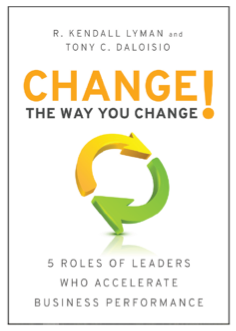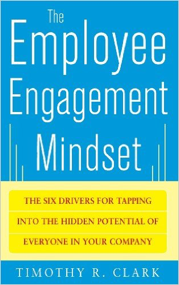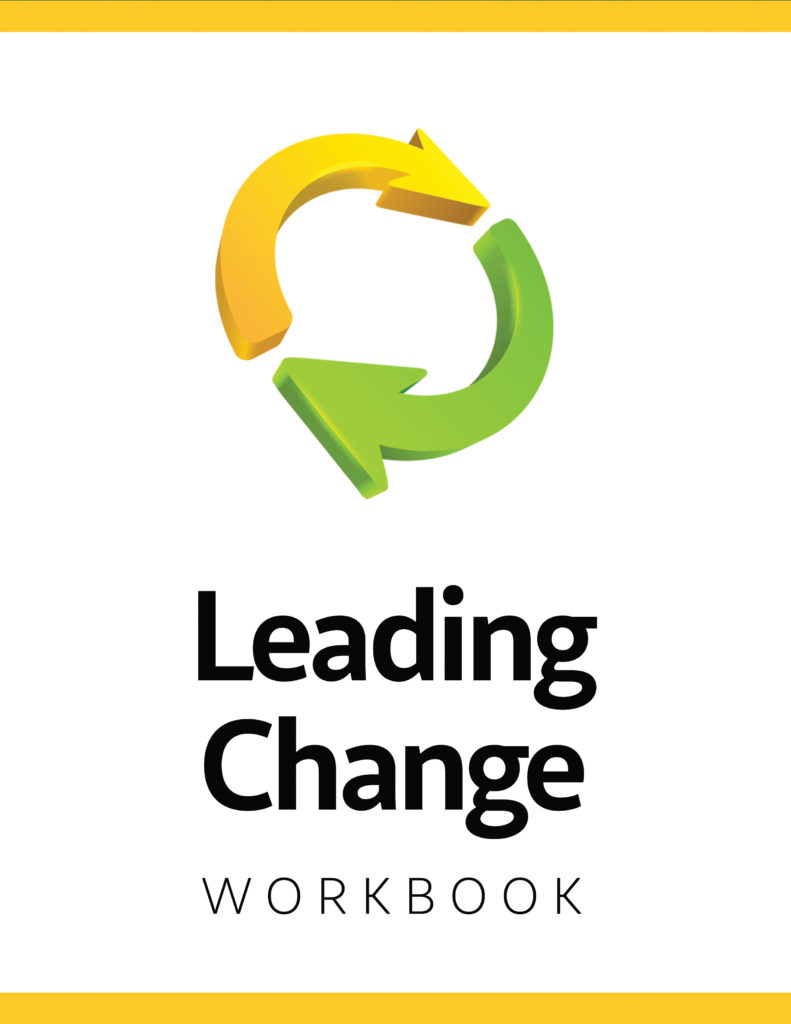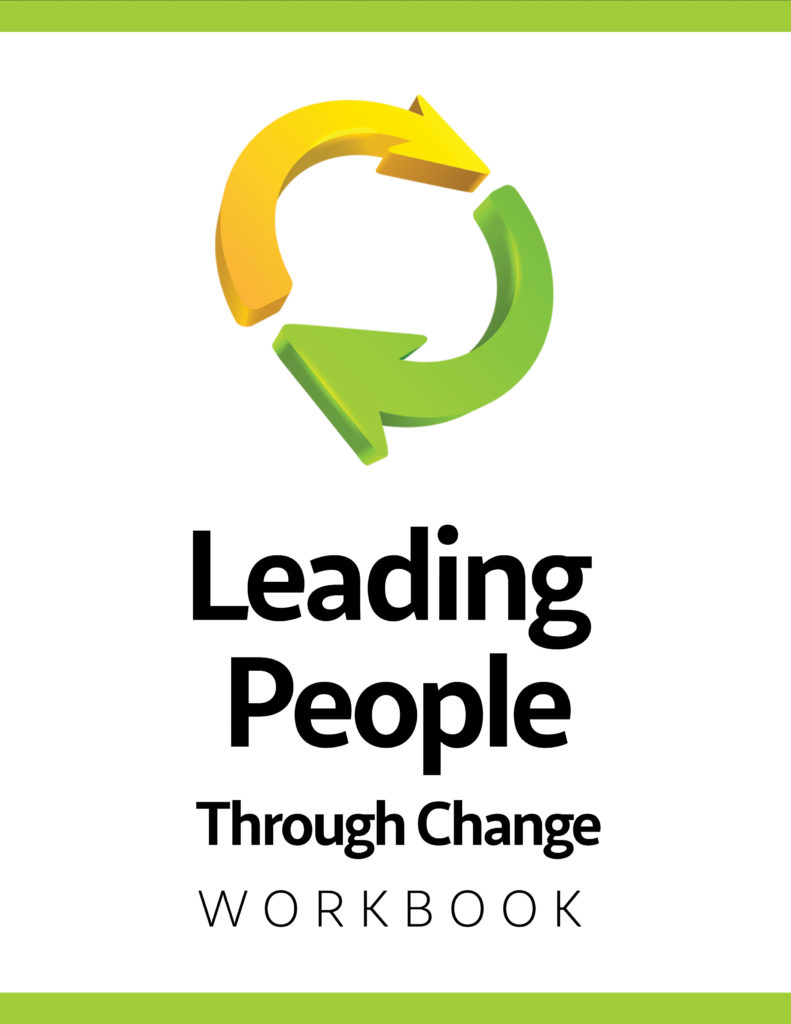Is this your experience with change?
-
-
Lackluster Results
-
Failed implementation
-
Frustrated employees unwilling to engage
-
Misaligned leadership
-
Competing approaches to change
-
Unfortunately, this is way too common in organizations. We need to change how change happens. For too long, we have taken a management approach to change that focuses on the technical aspects of change (what’s changing and what’s not, who needs to be involved, stakeholder management, communication management, information management) and delayed or ignored the human side of change that requires leadership (communication, education, involvement). Great leaders of change do three things differently:
-
Change how they think and talk about change. They engage in big conversations about performance, capacity to change, friction points in the business, the culture and what it’s like to work here, the emotions of change, and what’s in it for employees if they do change.
-
Change their approach to change. Change is successful only when it’s focused both inside-out and outside-in. “Changing the system will change what people do. Changing what people do will not change the system.” (Peter Scholtes). Training programs to help individuals deal with change won’t change organizational misalignments. And restructuring the business isn’t enough to deal with the emotional side of change that people experience. William Bridges, a guru of change, said, “You simply cannot get the results you need without getting into ‘that personal stuff.’ The results depend on getting people to stop doing things the old way and getting them to start doing things a new way. There is no way to do that impersonally.” Successful change transforms all three levels in an organization—individual, team, and organization.
-
Elevate the roles they play. Great change leaders play differently. They move from the background or sidelines and engage directly. They don’t delegate to a change team but step in and lead. They change communication from rhetoric and platitudes to practical and authentic. They model, they listen, and they engage in the difficult conversations. Great leaders of change play five roles that set them apart from managers of change:
-
-
-
Focus: Set the direction and pace of change; communicate the What, Why, When, and How of change (over and over and over again)
-
Align: Remove roadblocks and old ways of doing business to enable new behaviors required by the change
-
Engage: Foster conditions that boost engagement and create an effective culture
-
Lead: Transform their personal leadership and the aggregate effectiveness and capacity of the leadership team
-
Sustain: Institutionalize change into the “way we do things” and ensure it is owned by the business
-
-
1. Change the Way You Change!
The ability to accelerate organizational change is arguably the most important role of a leader, yet one of the least understood. While individual leaders may excel at creating long-range strategy or  executing short-term plans—skills they acquire through innate ability and experience—few have mastered the art of getting people to change the way they approach their jobs.
executing short-term plans—skills they acquire through innate ability and experience—few have mastered the art of getting people to change the way they approach their jobs.
CHANGE THE WAY YOU CHANGE! shows how to manage and blend the five roles of great change leaders to create and shape the future state of an organization:
-
Focus
-
Align
-
Engage
-
Lead
-
Sustain
When these roles are played well, it shifts how leaders think and talk about change, approach change, and elevate what they do as a leader of change. Successful change is about getting both the technical solution right and helping other leaders, managers, and employees want it. When employees are committed to change and the organization is aligned to reinforce that commitment, transformations are accelerated. Sustainable change only happens when individual, team, and organizational transformation happen concurrently.
2. Own Your Own Engagement!
The Facts: Highly engaged employees get results with energy, passion, and purpose. They stay longer, innovate faster, and execute better. Organizations with highly engaged employees outperform their rivals in operating income (19 percent), net income growth (14 percent), and earnings per share (28 percent).
their rivals in operating income (19 percent), net income growth (14 percent), and earnings per share (28 percent).
The Challenge: The bad news is that only 25 percent of employees are highly engaged. Most contribute only a fraction of their talent and discretionary effort. Searching for the secret sauce, organizations chase everything from gimmicks to highly complex theory. Rarely does any of it work.
The Solution: A closer look at high engagement reveals two remarkably consistent patterns: (1) The highly engaged take personal and primary responsibility—they own their own engagement; and (2) the highly engaged apply six drivers as personal patterns and only expect the organization to play a support role.
Drivers of Engagement: On an individual level, Six Drivers of Engagement™ represent “personal processes”. On an enterprise level, they represent “organizational systems.” Most approaches to engagement are narrow, incomplete, and temporary. This keynote will help you learn what drivers will better enable engagement of your people and what it will take to create an organization that will enable that engagement.
WORKSHOPS

LEADING CHANGE
Course: Leading Change
Audience: Leaders of complex change projects
Duration: 4 days
Focus: Leading and managing change, overcoming resistance, organizational alignment, sustainability

MAKING CHANGE HAPPEN
Course: Making Change Happen
Audience: Leaders and projects managers of small to medium change projects
Duration: 3 days
Focus: Build capability to diagnose change readiness, barriers, and needs; learn change tools to make change happen and mitigate risk

LEADING PEOPLE THROUGH CHANGE
Course: Leading People Through Change
Audience: Frontline leaders implementing change in their areas
Duration: 1.5 days
Focus: Manage self in change, lead the change process, and champion change

CHANGE FOR HR BUSINESS PARTNERS
Course: Change for HR Business Partners
Audience: FSupporting Leaders of complex change projects
Duration: 3 days
Focus: Enabling senior leaders to lead and manage change, overcome resistance, align the organization, and sustain change
CONSULTING
Leading transformational change is hard. It requires putting aside time to step in and have hard conversations, realign the business, remove roadblocks, and build culture. Leading change is not something you can delegate. Leading change requires looking at new ways of working together; new behaviors that need to be defined, fostered, and celebrated; and alignment of key processes and support systems. And it means increasing the capacity and effectiveness of leaders.
Great leaders of change ask the following questions:
-
How effective is my personal leadership? Is my leadership a competitive advantage or disadvantage? How do I know?
-
What is the level of our collective leadership effectiveness on the team? How does our effectiveness compare to competitors?
-
How confident are we that this team will succeed with the members currently in place? Is our leadership developing at a pace to stay relevant? How do we know? What is our leadership system to develop or attract the best talent?
-
Are we delivering desired results? How does our performance compare to other high-performance teams? What is our stakeholder satisfaction rating? Is it improving?
-
How effective is our decision making (Quality x Speed x Yield – Effort)? Are we at or above parity with competitors?
-
How do we compare to our competitors in collaboration? Innovation?
-
What is our success rate at leading change? Are we getting better?
-
How does our culture compare to competitors? What is our level of engagement? How does that compare to competitors?
-
How do employees rate us on clarity of vision, translation to priorities, and alignment on execution? Do they know (and are they passionate about) the WHY of what we do? How connected do our employees feel to the WHY?
-
Is it clear how we win? Do we keep score? Is it cascaded throughout the organization?
We consult with leaders who want to build a senior leadership team and organization that can not only answer these questions, but also thrive on getting better and better. Specifically, we help leaders:
-
-
-
-
Create a change strategy to transform the business
-
Transform how the senior leadership team leads the business
-
Build an organization aligned to the new change focus
-
Engage employees to get commitment, ownership, and buy-in
-
Improve decision effectiveness by clarifying roles and decision rights
-
Develop a high-performance culture
-
-
-

